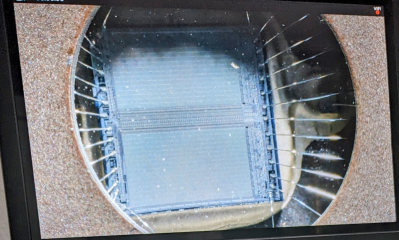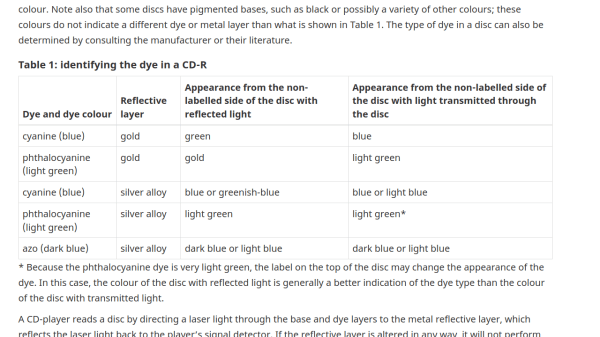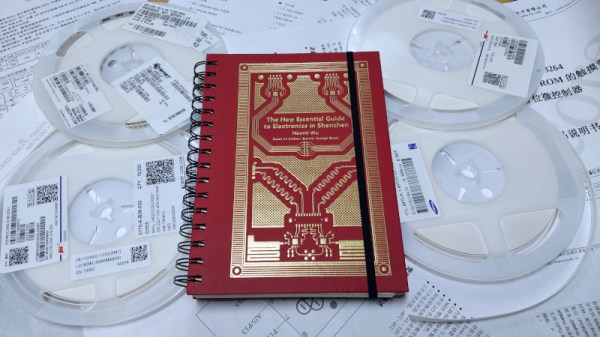It is one of Murphy’s laws, we think, that you can’t get great things when you need them. Back in the heyday of shortwave broadcasting, any of us would have given a week’s pay for even a low-end receiver today. Digital display? Memory? Digital filtering? These days, you have radios, and they aren’t terribly expensive, but there isn’t much to listen to. Making matters worse, it isn’t easy these days to string wires around in your neighborhood for a variety of reasons. Maybe you don’t have a yard, or you have deed restrictions, or your yard lacks suitable space or locations. This problem is so common that there are a crop of indoor antennas that seem attractive. Since I don’t often tune in shortwave and I don’t want to have to reset my antenna after every storm, I decided to look at the Tecsun AN-48X along with a YouLoop clone from China. Let’s start with the Tecsun. Continue reading “An Antenna To Throw You For A Loop”
Reviews263 Articles
A Look At The Intel N100 Radxa X4 SBC
Recently Radxa released the X4, which is an SBC containing not only an N100 x86_64 SoC but also an RP2040 MCU connected to a Raspberry Pi-style double pin header. The Intel N100 is one of a range of Alder Lake-N SoCs which are based on a highly optimized version of the Skylake core, first released in 2015. These cores are also used as ‘efficiency’ cores in Intel’s desktop CPUs. Being x86-based, this means that the Radxa X4 can run any Linux, Windows and other OS from either NVMe (PCIe 3.0 x4) or eMMC storage. After getting his hands on one of these SBCs, [Bret] couldn’t wait to take a gander at what it can do.
Installing Windows 11 and Debian 12 on a 500 GB NVMe (2230) SSD installed on the X4 board worked pretty much as expected on an x86 system, with just some missing drivers for the onboard Intel 2.5 Gbit Ethernet and WiFi, depending on the OS, but these were easily obtained via the Intel site and installed. The board comes with an installed RTC battery and a full-featured AMI BIOS, as well as up to 16 GB of LPPDR5 RAM.
Using the system with the Radxa PoE+ HAT via the 2.5 Gbit Ethernet port also worked a treat once using a quality PoE switch, even with the N100’s power level set to 15 Watt from the default 6. The RP2040 MCU on the mainboard is connected to the SoC using both USB 2.0 and UART, according to the board schematic. This means that from the N100 all of the Raspberry Pi-style pins can be accessed, making it in many ways a more functional SBC than the Raspberry Pi 5, with a similar power envelope and cost picture.
At $80 USD before shipping for the 8 GB (no eMMC) version that [Bret] looked at one might ask whether an N100-based MiniPC could be competitive, albeit that features like PoE+ and integrated RPi-compatible header are definite selling points.
Hands On: AD409-Max Microscope
It used to be that only the most well-equipped home electronics lab had a microscope. However, with SMD parts getting smaller and smaller, some kind of microscope is almost a necessity.
 Luckily, you can get USB microscopes for a song now. If you’re willing to spend a little more, you can get even get microscopes that have little LCD screens. However, there are some problems with the cheaper end of these microscopes.
Luckily, you can get USB microscopes for a song now. If you’re willing to spend a little more, you can get even get microscopes that have little LCD screens. However, there are some problems with the cheaper end of these microscopes.
Many of them have small and wobbly stands that aren’t very practical. Some don’t leave you much room to get a soldering iron in between the lens and the part. Worse still, many cheap microscopes have trouble staying still when you have to push buttons or otherwise make adjustments to the device.
It seems like every time a new generation of microscopes aimed at the electronics market arrives on the scene, many of the earlier flaws get taken care of. That’s certainly the case with the Andonstar AD409-Max.
A Primer On Optical Storage Data Preservation
Picking a storage medium for data preservation can be a conflicting time. Sure, they say optical storage tends to last, but it can’t be as straightforward as just burning everything onto Blu-Rays, right? Here’s a paper from Canadian Conservation Institute, teaching you the basics of using compact disks for data storage, it appears, without missing a single detail, and taking about ten minutes to read.
Here, you will learn about the different kinds of disks available and how their manufacturing-inherent qualities affect their preservation capabilities. Are dual-layer DVDs better than single-layer ones, or is it the opposite? How do CDs compare? And what about Blu-Ray disks? Wonder no more, here you will get answers to questions you didn’t known to ask. Data preservation is a game of numbers to preserve numbers, and this paper also outlines how to properly record, store, and test your disks to raise your chances.
Whether you’re only looking to delve into data preservation, or trying to improve your own policies, this looks like is a perfect document for you. After all, if you’re not aware of the best practices, you might end up having to digitize old floppies or even LaserDisks – not that those aren’t fun journeys to read about, of course, and we recommend it. Data preservation isn’t just about optical disks, of course – it’s a practice with a rich history.
Plasma Cutter On The Cheap Reviewed
If you have a well-equipped shop, it isn’t unusual to have a welder. Stick welders have become a commodity and even some that use shield gas are cheap if you don’t count buying the bottle of gas. But plasma cutters are still a bit pricey. Can you get one from China for under $300? Yes. Do you want one that cheap? [Metal Massacre Fab Shop] answers that question in the video below.
First impressions count, and having plasma misspelled on the unit (plasme) isn’t promising. The instructions were unclear, and some of the fittings didn’t make him happy, so he replaced them with some he had on hand. He also added some pipe tape to stop any leaking.
The first test was a piece of quarter-inch steel at 35 amps. The machine itself is rated to 50 amps. Sparks ensued, and with a little boost in amperage, it made a fair-looking cut. At 50 amps, it was time to try a thicker workpiece. It made the cut, although it wasn’t beautiful. The leaking regulator and the fact that he can’t run the compressor simultaneously as the cutter didn’t help.
From the look of it, for light duty, this would be workable with a little practice and maybe some new fittings. Unsurprisingly, it probably isn’t as capable as a professional unit. Still could be very handy to have.
It is possible to convert a welder into a plasma cutter. A handheld unit like this probably won’t benefit from a Sharpie.
Review: The New Essential Guide To Electronics In Shenzhen
The city of Shenzhen in China holds a special fascination for the electronic hardware community, as the city and special economic zone established by the Chinese government at the start of the 1980s it has become probably one of the most important in the world for electronic manufacturing. If you’re in the business of producing electronic hardware you probably want to do that business there, and if you aren’t, you will certainly own things whose parts were made there. From the lowly hobbyist who buys a kit of parts on AliExpress through the project featured on Hackaday with a Shenzhen-made PCB, to the engineer bringing an electronic product to market, it’s a place which has whether we know it or not become part of our lives.
First, A Bit Of History

At a superficial level it’s very easy to do business there, as a quick trawl through our favourite Chinese online retailers will show. But when you’ve graduated from buying stuff online and need to get down to the brass tacks of sourcing parts and arranging manufacture, it becomes impossible to do so without being on the ground. At which point for an American or European without a word of Chinese even sourcing a resistor becomes an impossibly daunting task. To tackle this, back in 2016 the Chinese-American hardware hacker and author Andrew ‘bunnie’ Huang produced a slim wire-bound volume, The Essential Guide to Electronics in Shenzhen. This book contained both a guide to the city’s legendary Huaquanbei electronics marts and a large section of point-to-translate guides for parts, values, and all the other Chinese phrases which a non-Chinese-speaker might need to get their work done in the city. It quickly became an essential tool for sourcing in Shenzhen, and more than one reader no doubt has a well-thumbed copy on their shelves.
There are places in the world where time appears to move very slowly, but this Chinese city is not one of them. A book on Shenzhen written in 2016 is now significantly out of date, and to keep pace with its parts that have since chanced beyond recognition, an update has become necessary. In this endeavour the mantle has passed to the hardware hacker and Shenzhen native Naomi Wu, someone with many years experience in introducing the people, culture, and industries of her city to the world. Her updated volume, The New Essential Guide to Electronics in Shenzhen has been the subject of a recent crowdfunding effort, and I was lucky enough to snag one. It’s a smart hardcover spiral-bound book with a red and gold cover, and it’s time to open it up and take a look. Continue reading “Review: The New Essential Guide To Electronics In Shenzhen”
EasyThreed K9: The Value In A €72 AliExpress FDM 3D Printer
![The hot end of the EasyThreed K9 is actually pretty nifty. (Credit: [Thomas Sanladerer])](https://hackaday.com/wp-content/uploads/2024/02/cheapest_fdm_printer_hotend.jpg?w=250)
What follows is both a mixture of wonder and horror, as the plastic build quality is everything but convincing, while at the same time, the self-contained nature of each of the three axes of the cantilevered design makes for very easy assembly. The print head has a nifty flip-up cover for easy access to the hot end, which makes the best of the anemic 24-watt power supply for the entire printer. A cooling fan with an air duct even provides part cooling, making this print head a contender for the ‘cheap but not terrible’ category. You can check out his full video review below.
Continue reading “EasyThreed K9: The Value In A €72 AliExpress FDM 3D Printer”

















